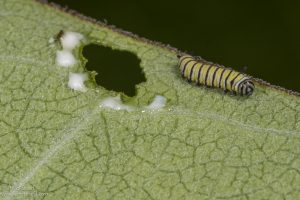 New research published in Frontiers in Ecology and Evolution by scientists Tara Crewe (Bird Studies Canada), Greg Mitchell (Environment and Climate Change Canada) and Maxim Larrivée (Montréal Insectarium) highlights the importance of Canadian summer breeding habitat for the eastern North American migratory Monarch butterfly population. The study is based on 15 years of community science data collected by Canadian volunteers involved in long term efforts to monitor butterfly diversity trends in Canada.
New research published in Frontiers in Ecology and Evolution by scientists Tara Crewe (Bird Studies Canada), Greg Mitchell (Environment and Climate Change Canada) and Maxim Larrivée (Montréal Insectarium) highlights the importance of Canadian summer breeding habitat for the eastern North American migratory Monarch butterfly population. The study is based on 15 years of community science data collected by Canadian volunteers involved in long term efforts to monitor butterfly diversity trends in Canada.
The unique butterfly community-based approach by this study points to factors driving Monarch population size in Canada that happen outside of the region during the butterfly’s life cycle. They show that the summer breeding population of Monarchs in southern Canada most often fluctuate in synchrony with other long-distance migrant butterflies compared with butterfly species that live year-round in Canada. Further, the study shows that fluctuations in the size of the summer breeding population in Canada reflect fluctuations in the size of the following winter population in Mexico.
Overall, these results suggest that the Monarch population in Canada is limited by factors acting mainly during spring migration, and that climate plays an important role in the ability of the Monarch to successfully re-colonize and breed in the northern portion of their summer range each year.
“This study used the huge amount of butterfly checklists that citizen scientists collect each year to provide a fresh perspective on where Canadian monarch populations are limited – without these checklists, we could not have taken the community-based approach to our analysis that helped us come to this conclusion” says Tara Crewe, lead author of the study.
Greg Mitchell, author and lead of the Canadian Monarch conservation expert group adds, “This is another concrete example of how citizen engagement in biodiversity monitoring can help scientists gain valuable new insight to better guide conservation actions of a species-at-risk like the Monarch butterfly”.
Everyone is encouraged to participate in the citizen science projects that provided the data for conservation and research. More information is available at e-Butterfly, Mission Monarch, and the Ontario Butterfly Atlas.
“I can’t think of a better way to stay connected with our environment while contributing to make a difference for it” says Maxim Larrivée.